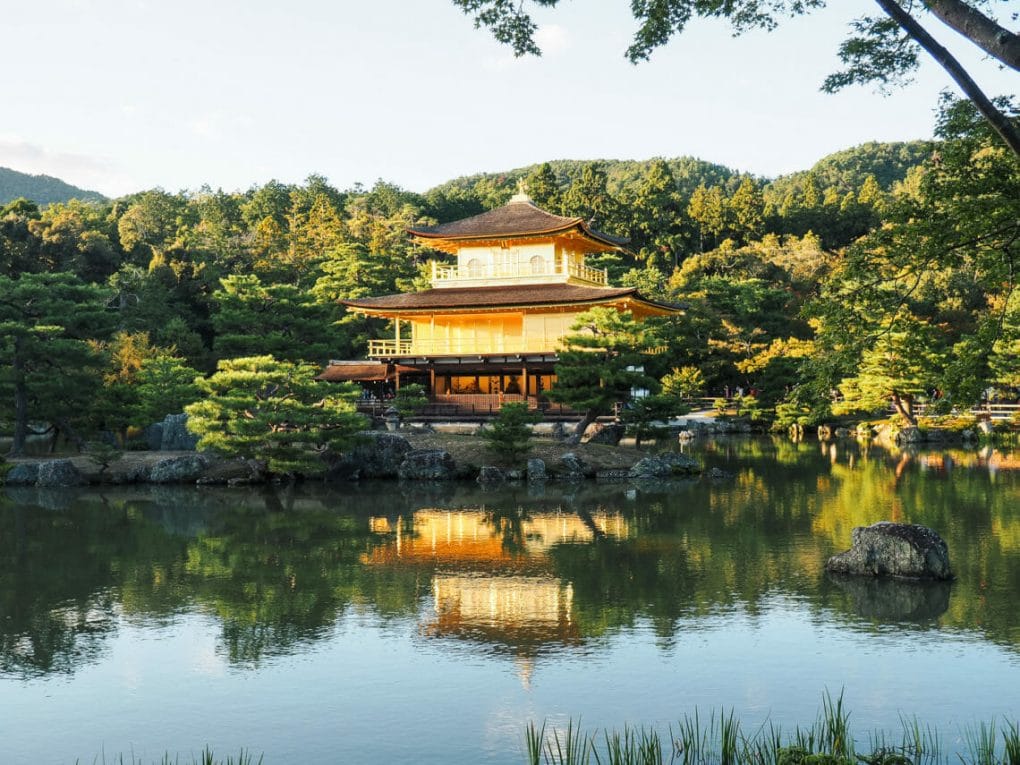Only have 7 days in Japan? This guide shares how to spend a perfect week exploring this insanely popular East Asian destination.
While you could spend an entire lifetime exploring the thousands of Buddhist temples, historical landmarks, sprawling cities, and charming villages, one week in Japan is just the right amount of time to get a taste of what this beautiful island country has to offer.
But how to choose where to go and effectively plan a trip to Japan? While there’s no right or wrong way to see the Land of the Rising Sun, most first-time visitors, myself included, head over to Japan’s most popular spots like Tokyo, Osaka, Kyoto, and/or Mount Fuji. And thanks to the country’s wide network of regional and bullet trains, it’s easier than ever to get a lot accomplished in only seven days.
Here’s how to spend a perfect 7 days in Japan and extra travel tips so you can customize the itinerary to suite your preferences!
This post may contain affiliate links, meaning at no additional cost to you, if you click my links and make a purchase, I may earn a small commission. Learn more on my disclosure page. Thank you for your support!
Best Time to Visit Japan
Most of Japan experiences four distinct seasons, which means the best time to visit Japan is typically any season other than winter.
Japan is particularly famous for blooming cherry blossoms that begin late-March to April and sometimes even into early May depending on the year and the place.
Summers in Japan are known to be hot and humid and temps, which can make walking around a bit unpleasant, but it’s worth it for lush, green landscapes!
We visited Japan right at the beginning of fall, and got to see the leaves starting to change to fiery reds and oranges. It was pretty amazing to see, and I can only imagine how gorgeous it is when the leaves are at peak color at these various best places to visit in Japan in fall.
Last but not least, although winter is often not the best time to visit any destination, in Japan has its magical moments. Especially if you’re hoping to see for yourself the monkeys bathing in hot springs at the Jigokudani Monkey Park.
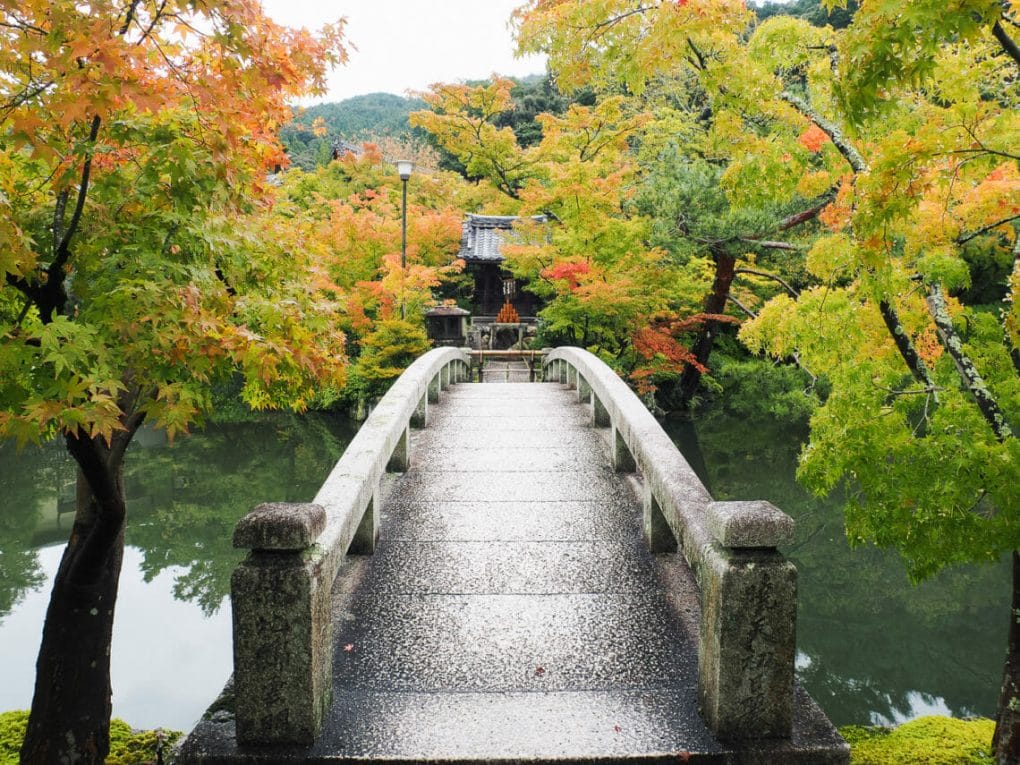
Best Places to Visit in Japan
With only a week to visit Japan, narrowing down where to go can be a challenge! Although I share what I feel to be a perfect Japan itinerary for first-time visitors, here’s a quick snapshot of some of the best places to visit in Japan if you’d like to switch this itinerary up a bit.
- Tokyo is the country’s and the world’s largest city, and def should be high on your list. This sprawling metropolis is famous for its neon-lit streets, delectable eats, and endless list of exciting attractions.
- Kyoto is known as the “cultural capital” of Japan thanks to the 1,500+ temples and historic landmarks within the city bounds. If considering Tokyo vs. Kyoto, Kyoto has a much more laid back atmosphere than Tokyo.
- Osaka is a large port city that’s famous for Osaka castle and has a fantastic street food scene.
- Okinawa is a small island off of the southern shore of the mainland and offers a very culturally distinct experience from the rest of Japan. The island has warm temps and sandy beaches.
- Hiroshima is a historically important city that is famous for its memorials that stand as a testament to the horrors of war. Today, this modern destination has a castle and a popular Japanese garden.
- Hakone is a beautiful little city tucked away in the mountains that is known as a fantastic day trip from Tokyo. The highlights of Hakone include catching views of the iconic Mount Fuji, seeing boiling sulfur hot springs, and traditional Japanese baths known as onsen.
These beautiful places in Japan are just the tip of the iceberg, but give you an idea of how to experience Japan.
How to Get Around Japan
Once you decide where in Japan to go, figuring out how to actually get there is your next challenge. Thankfully, public transportation in Japan is world famous for being uber modern, fast, clean, and well-connected. That means taking the country’s fast trains, regional trains, buses, metros, etc. are your best option.
The Japan Rail Pass (JR Pass)
As convenient and fantastic as the public transport is in Japan, it can be pretty expensive, as is most things in Japan. So after doing a lot of research, we decided to purchase the Japan Rail Pass for our week in Japan.
Things to know about the Japan Rail Pass
- The pass is only for tourists and can be purchased for durations of 7, 14, or 21 days
- It costs €236.00 for 7 days, €375.00 for 14, and €480.00
- It allows for unlimited rides across Japan on all non-bullet trains + most routes on the Shinkansen bullet train
- Be sure to map out your planned train routes and their costs before purchasing, to see if the pass is worth it.
- You must order the pass online in advance before entering Japan
- The pass must be purchased through a third party agency, so there are many websites selling the Japan Rail Pass, which can be confusing!
I recommend the company JR Pass for grabbing yours before you enter Japan! They also offer Regional JR Passes that are more region specific so you can tailor your travel to your exact itinerary and save.

The Perfect Japan Itinerary: 7 Days in Japan
The order in which your itinerary takes shape, will largely depend on where you fly in. Most people arrive in Tokyo, but Osaka is also a popular airport for international arrivals. We flew into Osaka, so began our journey with a rain ride to Kyoto. But it’s easy to flip the order of these two spots around if needed!
Days 1-3 Kyoto
Kyoto is a city bursting with ancient Japanese tradition. Historically the ancient capital of Japan, it now boasts some of the most treasured Japanese temples, shrines, gardens and traditions in the entire country.
Day 1 in Kyoto
Our first day in Japan was more of a transportation day, as most likely will be yours! We landed in Osaka and took the train to Kyoto. Once checked into our accommodation, we enjoyed a little dinner at a local conveyor belt sushi joint, and took a little evening stroll around downtown Kyoto.
Places to Visit in Kyoto: Day 2
There’s a lot to see and do in Kyoto, so you best grab your walking shoes! I tried to organize our tour of Kyoto in the most logical way in terms of proximity to one another. We walked between most stops but also took the local bus when needed.
Here’s an idea of how you can spend your first day in Kyoto:
- Ginkakuji Temple is known as the Silver Pavilion and has lush green gardens that we loved walking through.
- The Philosopher’s Path is a walking trail that follows a canal lined with cherry blossom trees.
- Eikan-dō Temple has a large complex and is perfectly placed along the Philosophers Path with pretty views.
- Nanzenji Temple was built in the mid 13th century, and is considered one of the most sacred temples in all of Japan. It’s also a very large temple complex which is free to enter, but each individual landmarks do have a fee.
Lunch break! We stopped at a local joint on our way to Chion In Temple.
- Chion In temple boasts the Sanmon Gate, largest wooden gate in the country.
- The Gion Neighborhood is famous traditional neighborhood known for geishas who continue the tradition and old wooden merchant houses.
- Kiyomizu Dera Temple is another popular and highly revered temple in Japan. The vast complex was built into the wooded hills near a waterfall, where the temple gets its name, “pure water temple”.
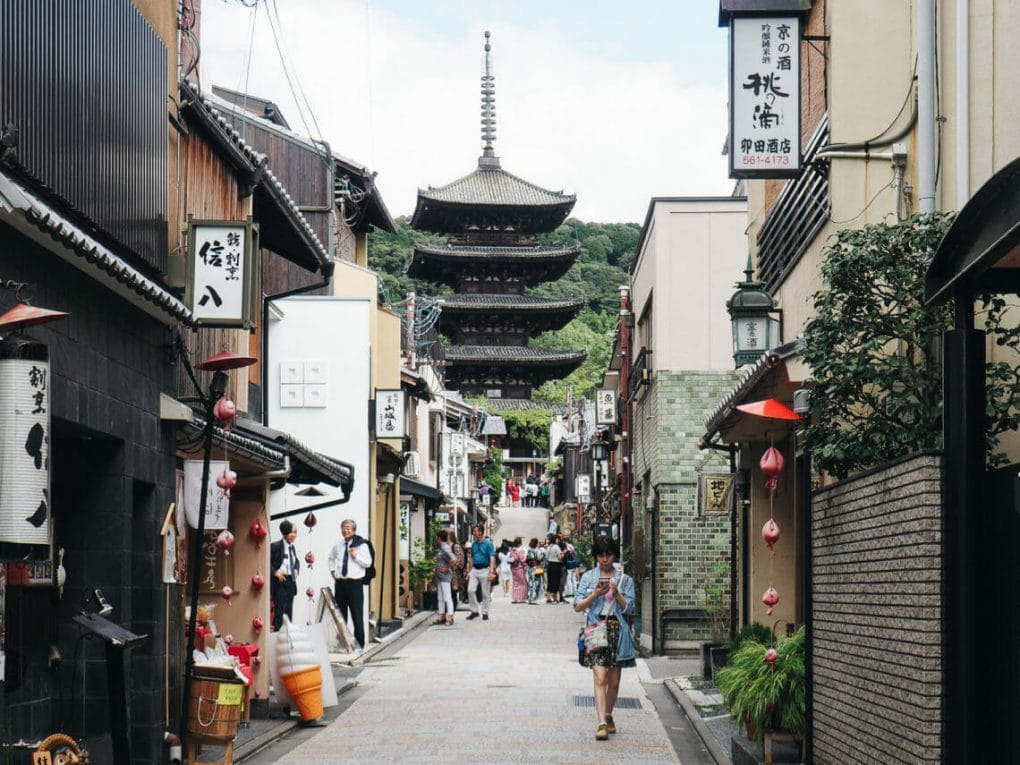
Things to do in Kyoto: Day 3
Day 2 in Kyoto meant venturing to further away spots like the vibrant Fushimi Inari-Shrine and peaceful Arashiyama Bamboo Forest which is actually outside of the main part of Kyoto.
- The Fushimi Inari-Shrine has over 10,000 vermillion torii gates that line the walking trail up to the top of Mount Inari and back down. Hiking the entire trail will take about 2 – 3 hours but is oh so worth it.
- Nijo Castle is an imperial palace, that was originally built as a residence for the first shogun (military dictator) of the Edo Period before his fall and should be on your list if you have time after the shrine and before the bamboo forest!
50 min train ride to the Saga-Arashiyama Station, which should be included on your JR Pass!
Once you arrive, enjoy a lunch break! We stopped at SAGANOYOU Cafe for traditional tofu on our way to the Arashiyama Bamboo Forest, and it was delicious.
- Arashiyama Bamboo Forest is a small but very pretty famous spot where you can stroll amongst towering bamboo stalks. You don’t need too much time to visit, but if you love nature like I do, it’s worth it.
- Kinkaku-ji or the Golden Pavilion is a glittering landmark that floats above water and is surrounded by lush greenery. We arrived just in time to see the temple bathed in light from the setting sun and it was absolutely stunning!
- The Nishiki Market is a covered market complex where many vendors sell delicious local fares. It closes at 6pm so this is only a spot to go if you have time. We made it just before close.
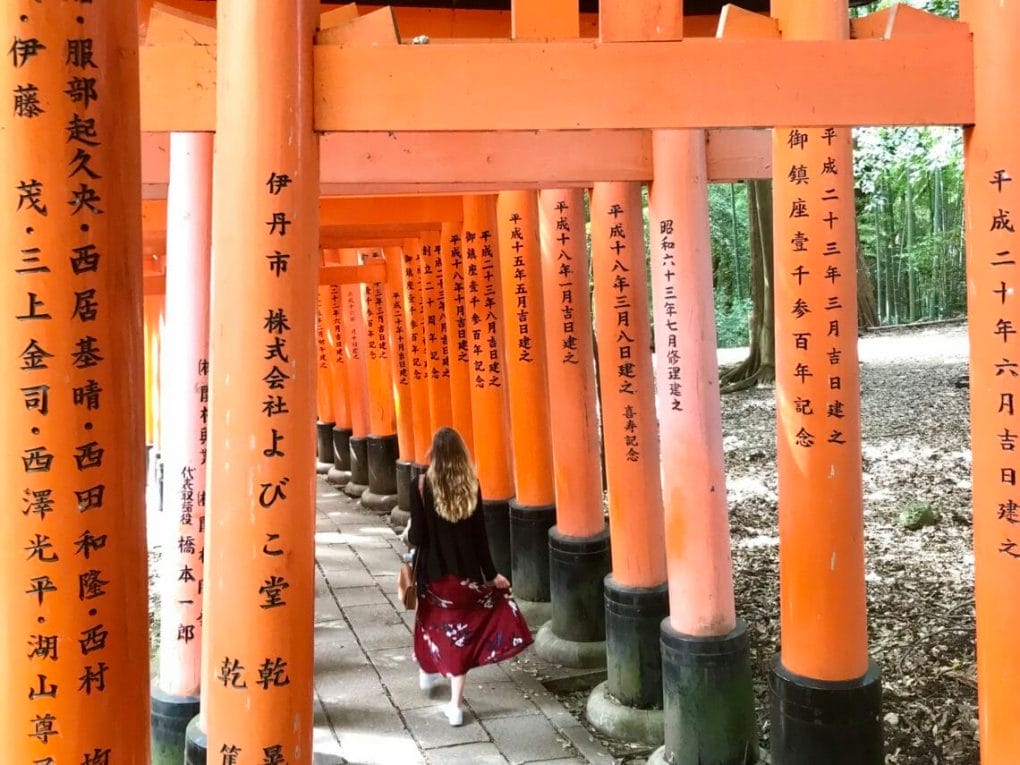
More Kyoto Attractions To Consider
The above things to do in Kyoto were what we prioritized, but there’s even more to love In Kyoto:
- Drink tea or see a tea ceremony in a traditional teahouse
- Take in panoramic views atop Kyoto tower
- Experience the zen garden at the Ryōan-ji temple
- Take a guided tour of the Kyoto Imperial Palace
- Stroll through the impressive gardens of the Katsura Imperial Villa
- Temple hop between as many of Kyoto’s temples as possible (there are over a 1,000 after all)
Where to Stay in Kyoto
Since there’s a lot to see and do in Kyoto, it’s best to stay either central or near the places you’d like to visit. That means some of the best areas in Kyoto are downtown, or near the Gion or Kawaramachi-Dori districts.
Budget Kyoto Accommodation: If you’re looking to save some coin, consider booking a dorm or cheap private in the Kyoto Morris Hostel or a capsule in The Millennials Kyoto. Capsule hotels are also unique to this part of the world and offer a cool cultural experience!
Mid-range Hotels in Kyoto: Miru Kyoto Nishiki is a lovely hotel with style that averages only about $100-$130 a night and offers Japanese standards or Western-style rooms near the Museum of Kyoto. Guest House Oumi is a charming hotel with homey flair, Japanese style accommodation, and reasonable rates near Nijo Castle.
Upscale Kyoto Hotels: The ROOT2 Hotel is a four-star hotel with bright and stylish decor near the Inari Shrine. For something a touch more cultural, check out Luxury Hotel SOWAKA, a beautiful Kyoto hotel with a Japanese garden that’s styled after traditional buildings. It’s also located near the Gion district.
↠ Read More: How to Spend Two Days in Kyoto

Days 4-6 Tokyo
Tokyo, Japan’s insanely busy capital, is a bustling metropolis where Japanese modern society meets ancient traditions. With a population of over 13 million people, there’s no shortage of interesting and unique things to see and do with 72 hours in Tokyo.
Tokyo is massive with many of its landmarks spread apart, which means that it’s not very walkable in that regard. You’ll need to navigate the Tokyo metro for this itinerary.
Things to Do in Tokyo: Day 4
On our first day in Tokyo, we focused on some of the city’s biggest modern landmarks. Here’s a sample of what you can do on your first day in Tokyo.
- Shinjuku is a popular ward in Tokyo that offers great shopping, a good intro to Tokyo, and lots of eats.
- The Metropolitan Government Building has an observation deck you can access for free.
Lunch break! If you’re in Shinjuku, I recommend Tempura Tsunahachi for lunch. This traditional join serves Japanese tempura and was delish!
- Omoide Yokocho translated to English as ‘Memory Lane’, is a cramped alleyway lined with tiny bars and restaurants and is truly a sight to see.
- Golden Gai is a famous area that boasts some of the best, and tiniest bars in Shinjuku. Come early (they were opening around 5) to grab a spot.
- Kabukicho is Tokyo’s largest red light district filled with electronic shops, neon signs and hopping dance clubs and is worth seeing at night.

Places to Visit in Tokyo: Day 5
The second day we prioritized more traditional Tokyo spots.
- Tsukiji Fish Market is a traditional market that while primarily sells fish, also hosts vendors selling traditional Japanese sweets, street food, and more.
- Sensoji Temple and Asakusa Shrine is probably one of Tokyo’s most famous temple and is a must.
- Nakamise Shopping Street, feet from Sensoji Temple, is lined with shops under cover of traditional Japanese buildings.
I recommend grabbing a street food lunch while on Nakamise Shopping street! Street food in Japan is an experience in and of itself.
- Harajuku on Takeshita Street is Internationally recognized for bold fashion, boutique shops, and quintessential Japanese cultural spots.
- Shibuya Crossing is a unique Tokyo landmark because it’s just a crosswalk. But it’s not just any normal crosswalk, it’s the largest in the world!
- Dinner at Genki Sushi in Shibuya while you’re there – hands down the coolest budget sushi restaurant I’ve ever been to!
- World Trade Center Observatory is not free, but offers stunning night views of twinkling Tokyo.
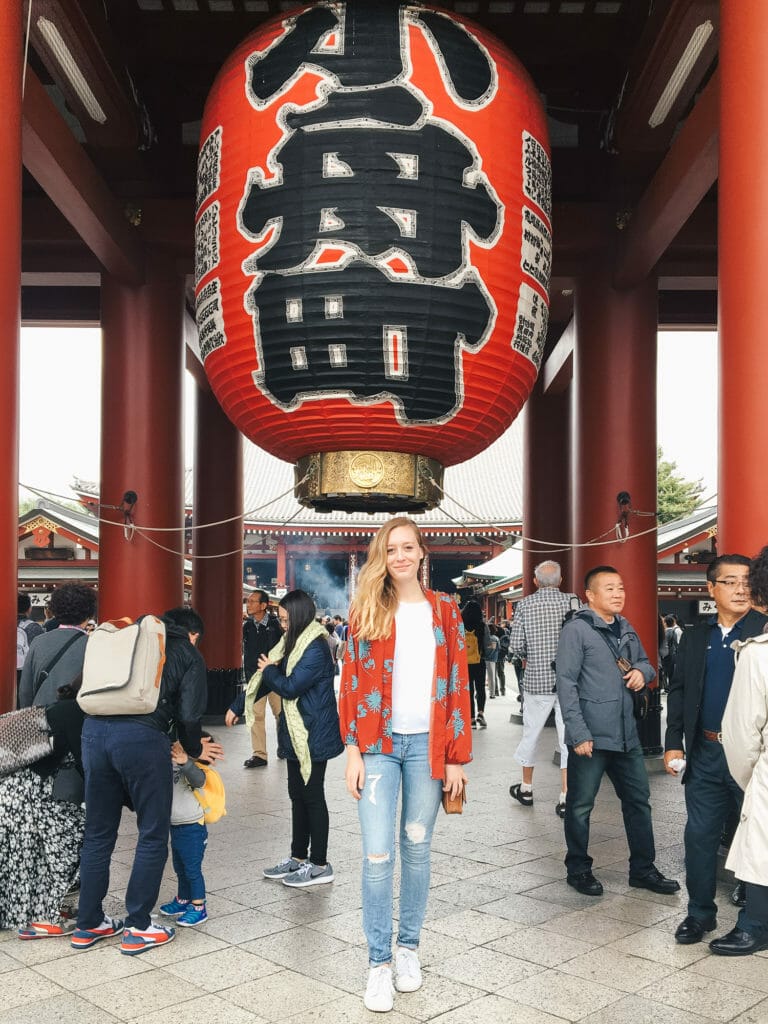
More of the Best Things to Do in Tokyo: Day 6
Feeling the full weight of our busy week, we went easy on ourselves on our last day in Tokyo. Day three was all about fresh air and green spaces.
- The Imperial Palace is built atop the site of the old Edo Castle, and is where the current emperor officially resides.
- Gyeon Gardens is a great place to enjoy a picnic and escape the concrete streets of Tokyo for a bit. It’s particularly beautiful in the spring when the cherry blossoms are in bloom.
- Yoyogi Park is another popular park known for live music, skyline views, and it’s location near the Meiji Shrine.
- Roppongi Crossing is a trendy ward in Tokyo known for cool sake bars, clubs, and cafes where you can enjoy dinner or a nightcap.

More Tokyo Attractions to Consider
This city is massive, which means there’s an endless of things to do! Here are some other popular attractions that may interest you:
- Climb the iconic Tokyo Tower modeled after the Eiffel Tower
- Visit the unique Gotokuji Temple, also known as the “cat temple” because of the thousands of red and white cat statues on the grounds.
- Treat yourself to dinner and a show at Tokyo’s many unique theater restaurants.
- Visit Edo-Tokyo or Ghibli Museum.
- Live out your Mario Kart fantasies and go-kart around the city in costume with Street Kart Tokyo Bay.
- Grab a coffee at a pet cafe where you can play with cats, dogs, and other animals.
Where to Stay in Tokyo
Tokyo is unique because there are so many districts that are fantastic places to stay.
Budget Tokyo Hotels/Hostels: Budget travel in Tokyo is tough, but the cool UNPLAN Shinjuku hostel and unique Toco Tokyo Heritage Hostel housed in a traditional Japanese building offer a great stay at reasonable rates.
Mid-range Tokyo Hotels: Hotel K5 offers private studio stye units and a stylish atmosphere. Hotel 1899 Tokyo is very affordable, has excellent reviews, and is located in a great part of the city.
Upscale Hotels in Tokyo: Trunk Hotel and Shangri-La Tokyo are up there as some of the best hotels in Tokyo and while pricey, aren’t insane. Shangri-La also rocks an incredible vview.
↠ Read More: How to Spend Three Days in Tokyo
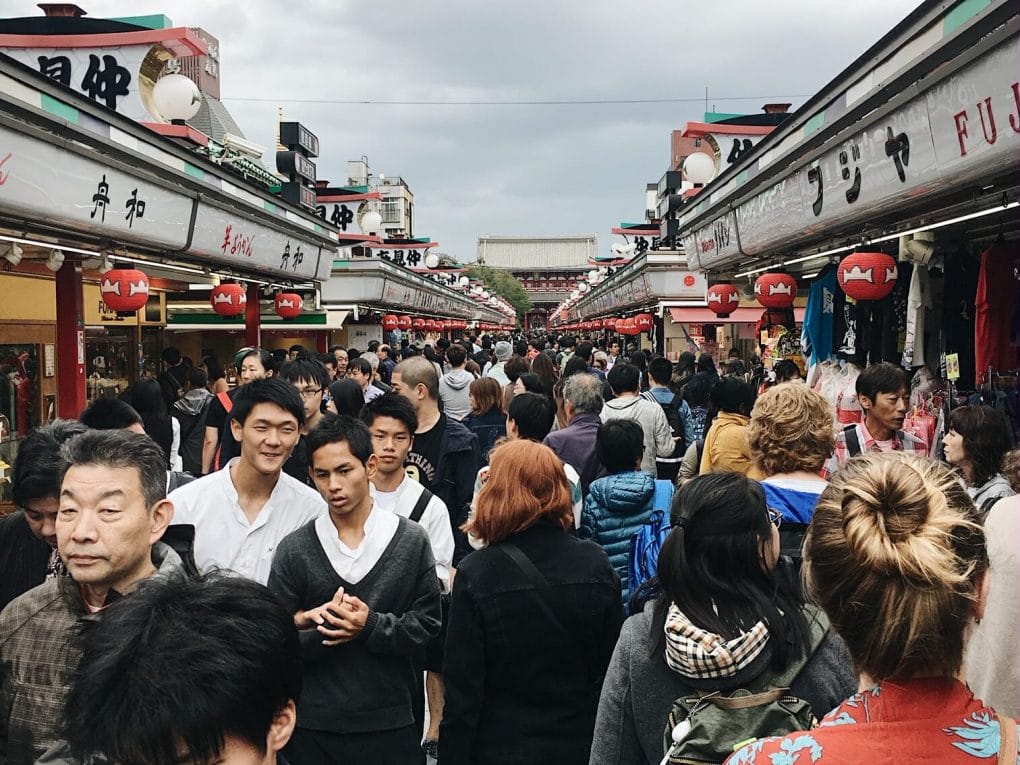
Day 7 Hakone
After three days in Tokyo, we set off for Hakone looking for a break in nature from the city. About an hour and a half train ride from the city center, this beautiful region of Japan is world-famous for its hot springs, dramatic views of Mt. Fuji, sulfur springs and beautiful Lake Ashinoko. All you need is a Hakone Free Pass and you’re good to go!
↠ Read More: Hakone Day Trip Itinerary
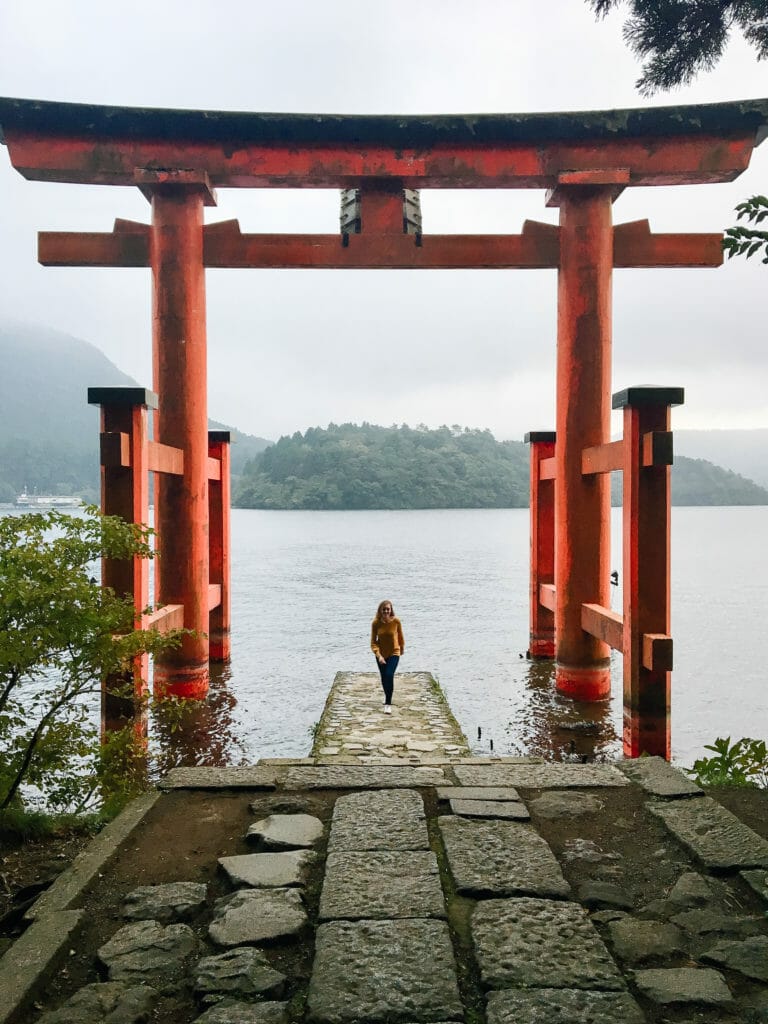
This post may contain affiliate links, meaning at no additional cost to you, if you click my links and make a purchase, I may earn a small commission. Learn more on my disclosure page. Thank you for your support!
There you have it – how to efficiently spend 7 days in Japan. We packed a lot of sights and attractions into our short 7 days, but for our very first trip, it was a great overview of the gems Japan has to offer visitors!
If you’re in need of more tips, don’t forget to check out my 20 Travel Tips for Japan!


